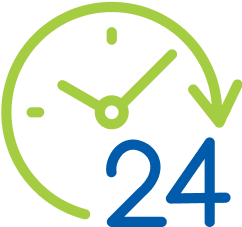When it comes to cutting back on household expenses, your heating and cooling bills often top the list. The good news is that simple thermostat adjustments can make a significant difference in energy usage—and in your wallet. However, just how much money you save depends on how and when you alter those temperature settings.
As cooler weather sweeps through places like Arlington Heights, Evanston, and Downers Grove in Illinois—or as lingering warmth continues in Tampa and Largo, Florida—let’s break down how to optimize your thermostat for maximum savings.
1. How Thermostat Adjustments Affect Your Bills
According to the U.S. Department of Energy, turning down the thermostat by even a single degree can save roughly 1% in heating costs over an 8-hour period. Conversely, raising your thermostat just a few degrees in warm weather can reduce air-conditioner run times. Here’s a brief overview of how it works in different seasons:
- Fall & Winter (Illinois or Cooler Months in Florida): Lowering the target temperature decreases how frequently your furnace runs, meaning less energy consumption.
- Spring & Summer (Florida or Warmer Months in Illinois): Increasing the target temperature by a few degrees can prevent your air conditioner from running continuously, helping you save on cooling costs.
2. Why a Programmable Thermostat Helps
A programmable thermostat takes the guesswork out of daily adjustments. Rather than manually raising or lowering the temperature when you leave the house or go to bed, you can set a schedule to automatically change settings during unoccupied hours. This is particularly useful if you:
- Work regular daytime hours and want the system to run less when the house is empty.
- Travel frequently and need to maintain a different baseline temperature while away.
- Prefer to sleep in a cooler environment without adjusting the thermostat manually each night.
Whether you live in Downers Grove with cooler autumns and harsh winters or in Largo with a prolonged warm season, a programmable thermostat ensures consistent energy-saving practices without sacrificing comfort.
3. Recommended Temperature Ranges
While personal comfort levels vary, here are some baseline guidelines to help reduce energy consumption:
Fall & Winter: Lowering your thermostat by about 10–15 degrees for eight hours a day (e.g., while you’re at work or asleep) can save around 10% per year on heating. Also, aim for a daytime temperature of about 68°F when home. If you’re away for an extended time, reduce it to the low 60s or upper 50s.
Spring & Summer: For air conditioning, set the temperature a few degrees higher (e.g., 78°F) when you’re home, and up to the low 80s if you’re away. Consider using fans to supplement cooling, allowing for a higher thermostat setting without feeling uncomfortable.
4. Special Considerations for Illinois vs. Florida
Illinois (Arlington Heights, Evanston, Downers Grove): Winters can be long and frigid. Lowering your thermostat while you’re out during the day or asleep overnight is key to controlling heating bills. Summers might be milder compared to Florida, but can still be humid. A programmable thermostat helps keep costs down during peak summer heat.
Florida (Tampa, Largo): Prolonged warm weather often leads to higher cooling bills. Incremental thermostat adjustments (raising the setpoint 2–3 degrees) can yield noticeable savings. Humidity control may be just as important as temperature. Some thermostats and HVAC systems offer settings to reduce indoor moisture levels, which can keep the home feeling more comfortable even at higher temperatures.
5. Cost Breakdown & Potential Savings
• Lower Utility Bills: Depending on how well you adhere to energy-saving practices, homeowners commonly see a 5–20% reduction in heating or cooling costs.
• ROI on a Programmable Thermostat: While digital or smart thermostats might cost more upfront, the return on investment typically comes within the first couple of years due to accumulated energy savings.
• Long-Term Benefits: Consistent temperature management also reduces the load on your furnace or air conditioner, potentially extending its lifespan and reducing maintenance expenses.
6. Troubleshooting & Helpful Tips
• Frequent Cycling: If your furnace or AC cycles on and off rapidly, check for overly narrow temperature settings or consult a professional to ensure your system is sized correctly.
• Inconsistent Temperatures: Leaky ducts or poor insulation can undermine thermostat settings. Consider an energy audit if certain rooms remain too cold or hot.
• Maintain Filters & Equipment: Dirty filters and coils force your system to work harder, negating the benefits of strategic thermostat adjustments.
• Humidity Management: In humid areas, pairing your thermostat with a dehumidifier or a variable-speed system helps maintain comfort at slightly higher temperature settings.
FAQs on Thermostat Adjustments
Q: Do I need a programmable or smart thermostat to save money?
A: While you can manually adjust a traditional thermostat, a programmable or smart model ensures changes happen consistently, even if you’re not home.
Q: How often should I change my thermostat settings?
A: Ideally, just once or twice per day. Constantly fiddling with the thermostat can reduce efficiency and shorten your HVAC system’s lifespan.
Q: Will extreme temperature setbacks damage my HVAC system?
A: Gradual and moderate setbacks are typically safe. Drastic fluctuations can make your system work overtime to catch up, so use incremental adjustments for best results.
Q: Can I adjust the thermostat differently for each room?
A: Some advanced systems offer zoning capabilities, allowing you to customize temperatures in different areas of the home. Otherwise, close vents or doors in rarely used rooms to redirect airflow.
Ready to Save on Your Energy Bills?
If you’re looking to optimize your home’s temperature settings and lower utility costs, ABC Plumbing, Sewer, Heating, Cooling and Electric is here to help.
Scroll further down the page, locate the ABC Plumbing location closest to you, and click the phone number to call us. Our experts serve both Illinois (Arlington Heights, Evanston, Downers Grove) and Florida (Tampa, Largo), and we’re ready to guide you toward a more comfortable, budget-friendly home all year round.
Related Blog Posts:
ABC Plumbing Locations
Arlington Heights, IL220 W Campus Dr | Largo, FL11701 S Belcher Rd Suite 127 |
Downers Grove, IL1001 Ogden Ave LL4 | Tampa, FL4326 W El Prado Blvd Suite 7 |
Evanston, IL828 Davis St UNIT 205 | |
Our Blog
VIEW ALL BLOGSReasons to Get an AC Tune-Up
-
Signs It's Time to Replace Your Air Conditioner
Your air conditioning system becomes an unsung hero for home comfort during the summer. When your AC shows signs of wear, you face that critical decision: Should I repair or replace it? Understanding the warning signs that signal it’s time for replacement can save money, prevent breakdowns during peak season, and ensure year-round comfort.READ MORE -
Tankless vs. Tank Water Heater: Which One is Right for You?
Your home's water heater is a considerable investment in home comfort and convenience. When the time comes to replace it, keep this in mind: whichever type of water heater you choose, you'll be living with that decision for over a decade. Hot water is an essential part of our daily lives, whether it's for showering, washing dishes, or tackling laundry.READ MORE -
What is Freon & Why is it Important?
Freon is a specialized refrigerant that plays a critical role in your home’s air conditioning system by facilitating the heat transfer process that cools indoor air temperatures. Understanding what freon is used for has become increasingly important for homeowners who want to make informed decisions about their home comfort and environmental stewardship.READ MORE
Our Promises To You
-

Convenient For You
We Work on Your Schedule
-

Background Checks
We do Drug Tests And Background Checks Before Hiring
-

No Need For Stress
Get ABCs Worry-Free Guarantee at No Cost
-

No Surprises
Pricing is By the Job, Not the Hour

